So what’s brewing?
A view of the Bachmann Scenecraft Brewery with the local ‘pick up’ goods setting back to pick up some empty coal wagons from the boiler house. Note the trailing connection with the ‘main line’, much safer than facing points?

Bachmann Scenecraft Brewery
It is summer and rather than completing the scenery effort has gone into brewing real beer and making wine. Is there time to look behind the scenes?
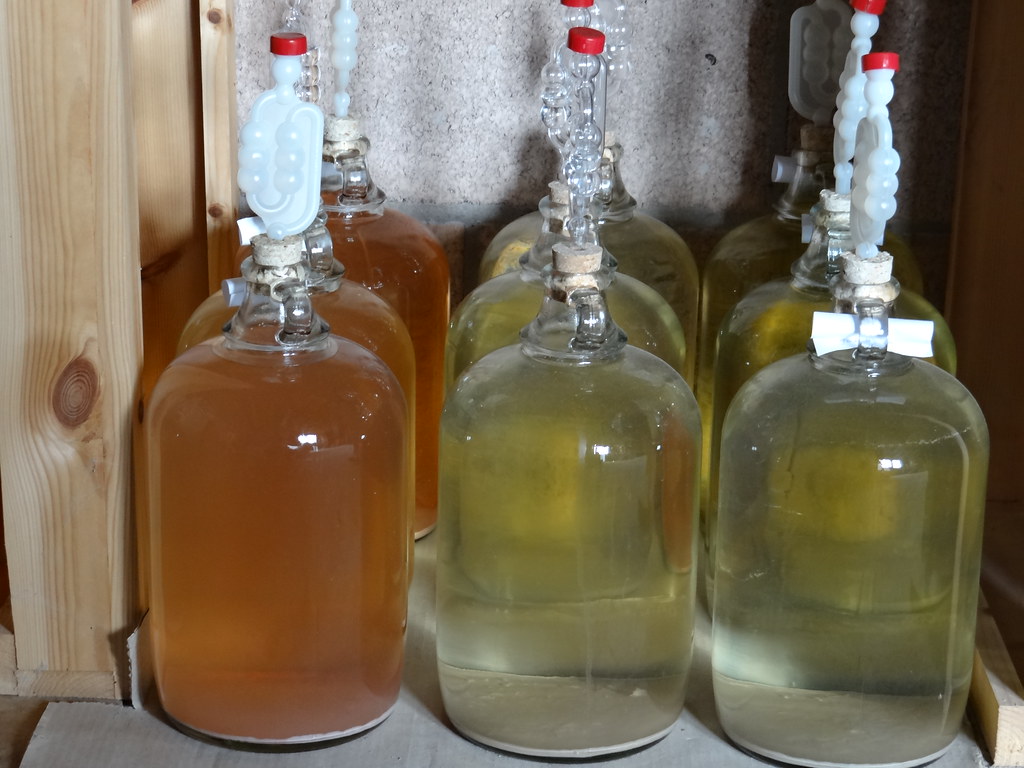
Maturing Wine (Rhubarb and Parsnip)
We have been making our own ‘country wines’ for over forty years and now seems to be an opportune moment to share some ideas. I think there are no hard and fast rules to making wine. However two books which have provided us with guidance and inspiration are listed below. Sadly both books are probably long out of print.
- ‘Pick, Cook and Brew – food from the hedgerows’ by Suzanne Beedell, 1975, Mayflower Books Limited.
- ‘Food for Free – a guide to the edible wild plants of Britain’ by Richard Mabey, 1972, Fontana/Collins
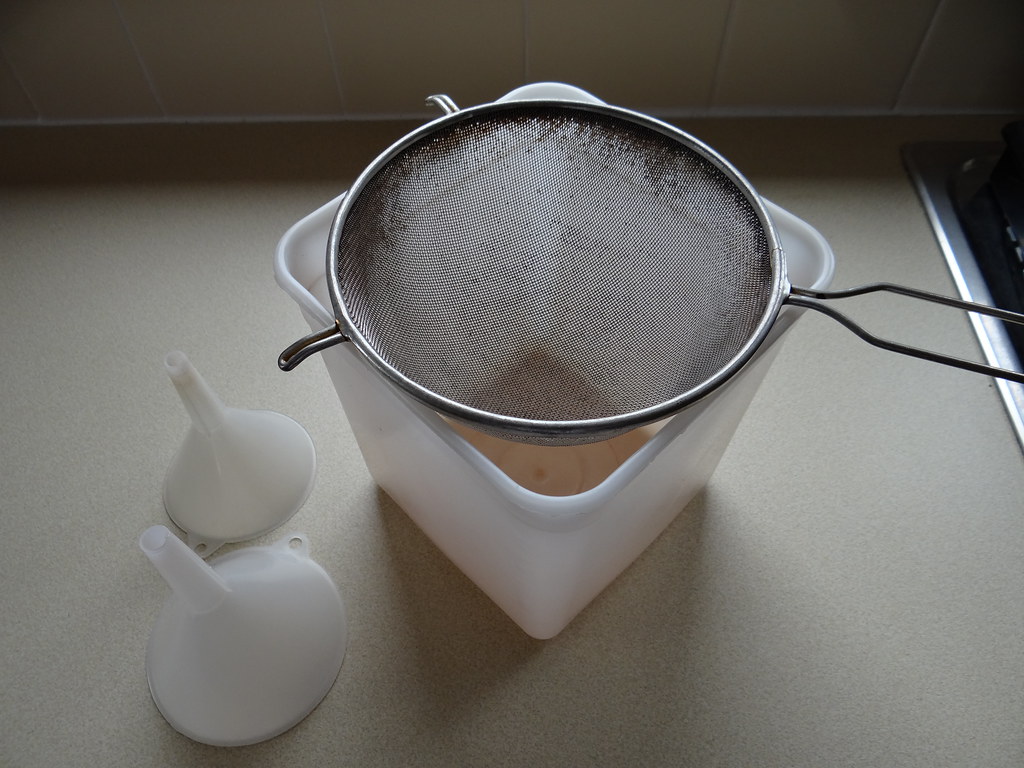
Gallon container, stainless sieve and plastic funnels
A good starting point might be the equipment that we use to make our home made wine? A lot of our equipment was bought from Boots the Chemist (when they were a proper shop), the first demijohns being purchased from the now defunct branch in Peebles in 1973.
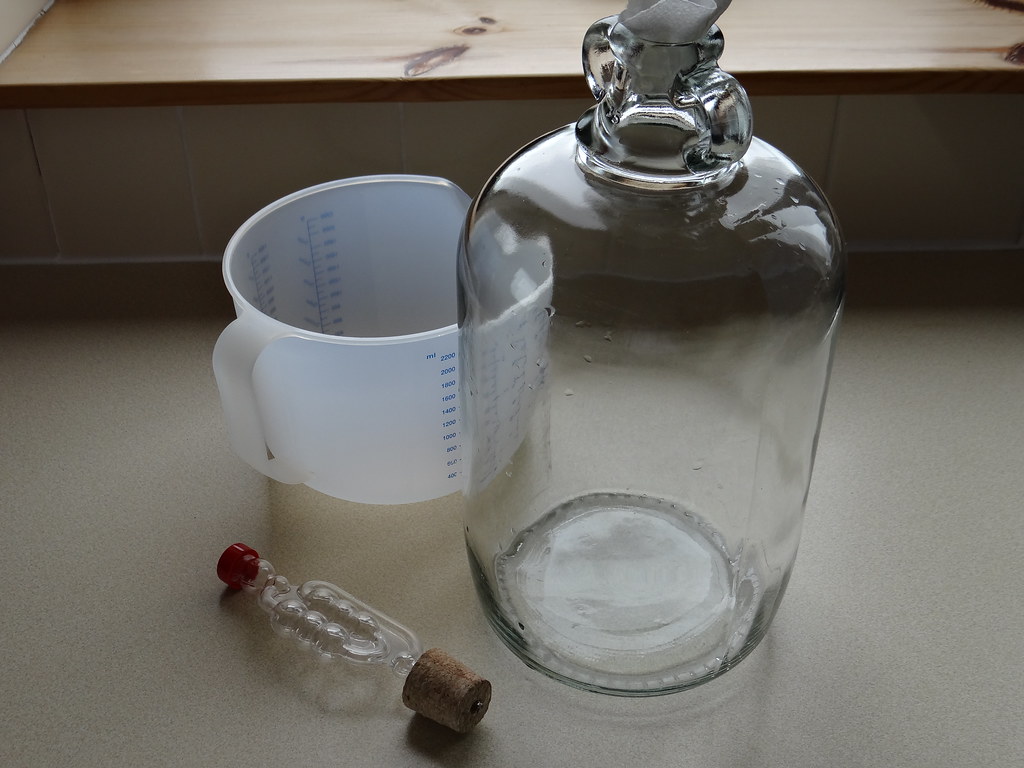
Demijohn and air lock
Lots of plastic, glass and stainless steel – all scrupulously clean. Usually the wine will be stored for twelve or more months before drinking so it is essential that all utensils and storage vessels are carefully cleaned before use.
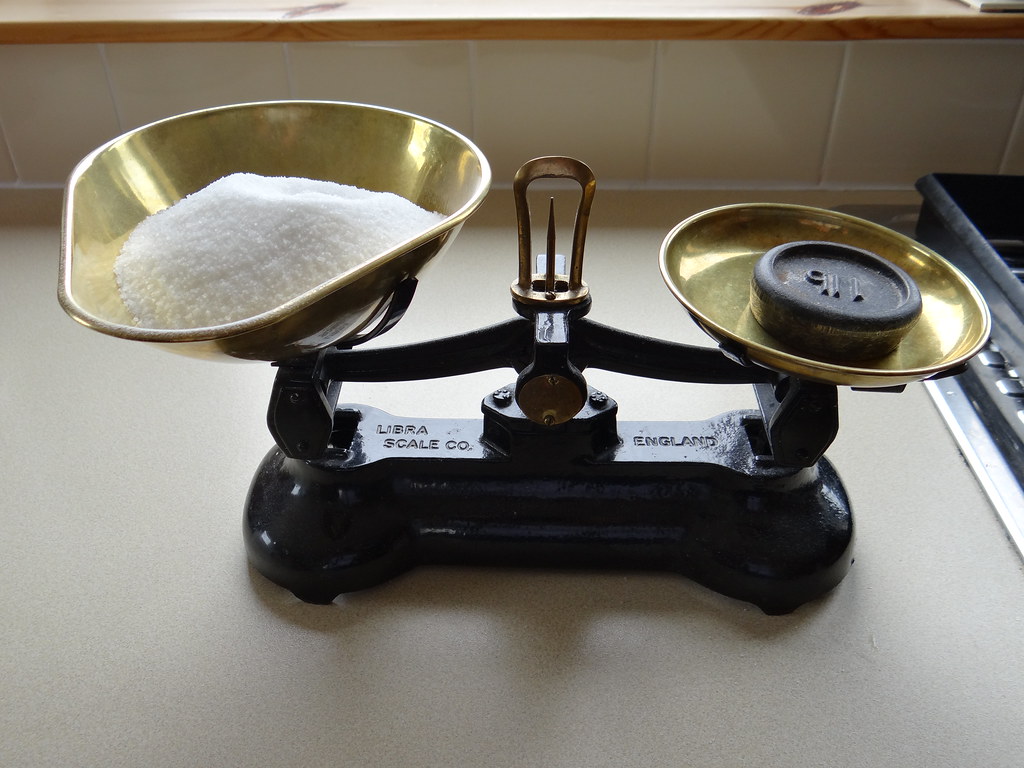
Sugar - 2.5 lb per gallon
All our wine is made to the same basic recipe. The starting point is a sugar syrup made from two and a half pounds of granulated sugar dissolved in a little over one and a half pints of water. With experience the quantity of sugar used to make the syrup can be changed, two and three quarter pounds to make a sweeter more syrupy wine, two and quarter pounds to make a lighter drier wine.
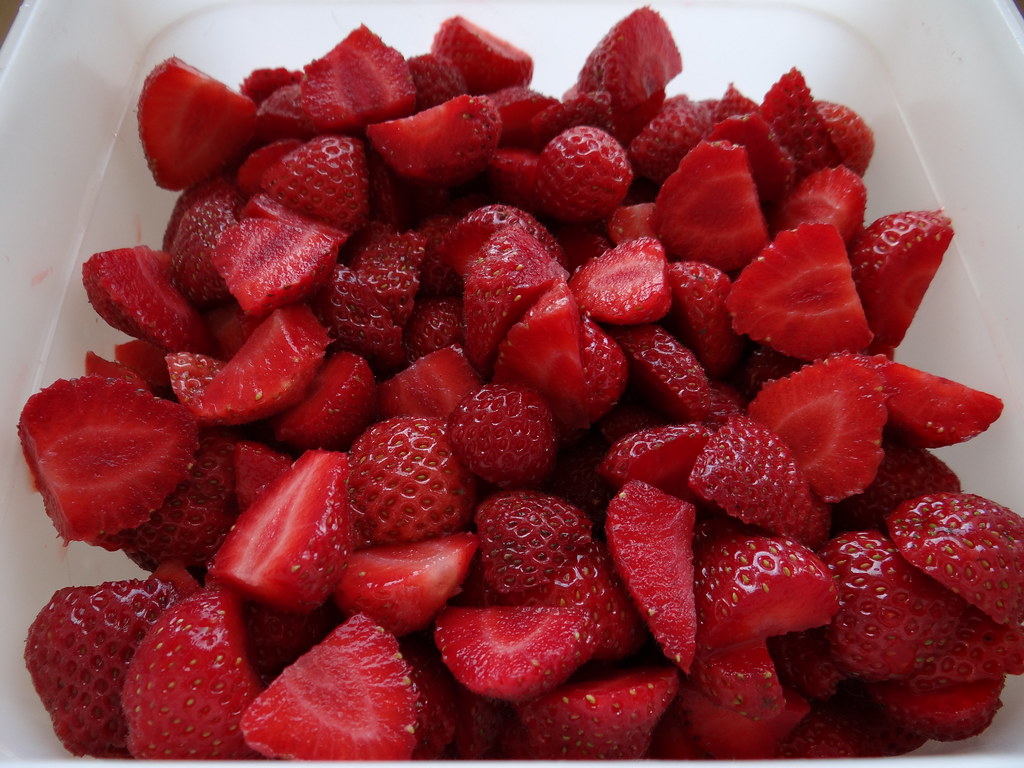
Washed and quartered strawberries
The sugar syrup is then flavoured with the fruit or flowers of the moment. The flavour is extracted by covering one gallon of the prepared fruit or flowers with boiling water and letting it stand for 24 hours. The resulting fruit or flower syrup is referred to as the ‘must’ and should be covered with a muslin or tea towel to prevent the uninvited attentions of insects and other organisms.
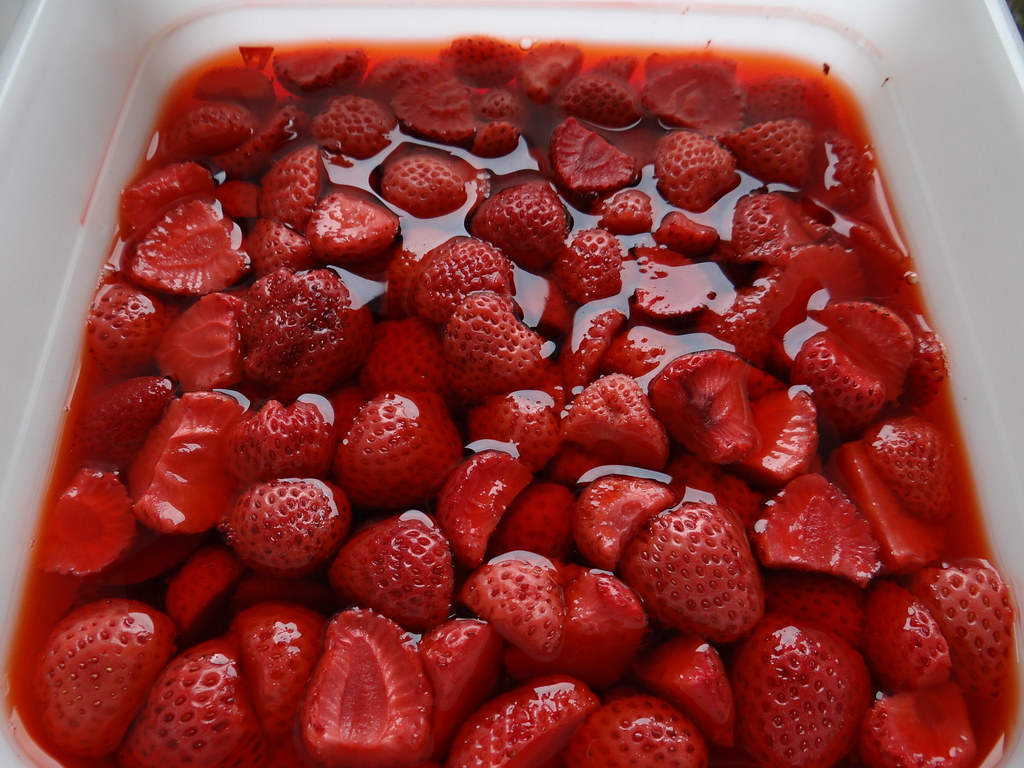
One gallon of strawberries covered with boiling water.
After 24 hours the fruit syrup can be poured off and placed in a demijohn along with the sugar syrup.
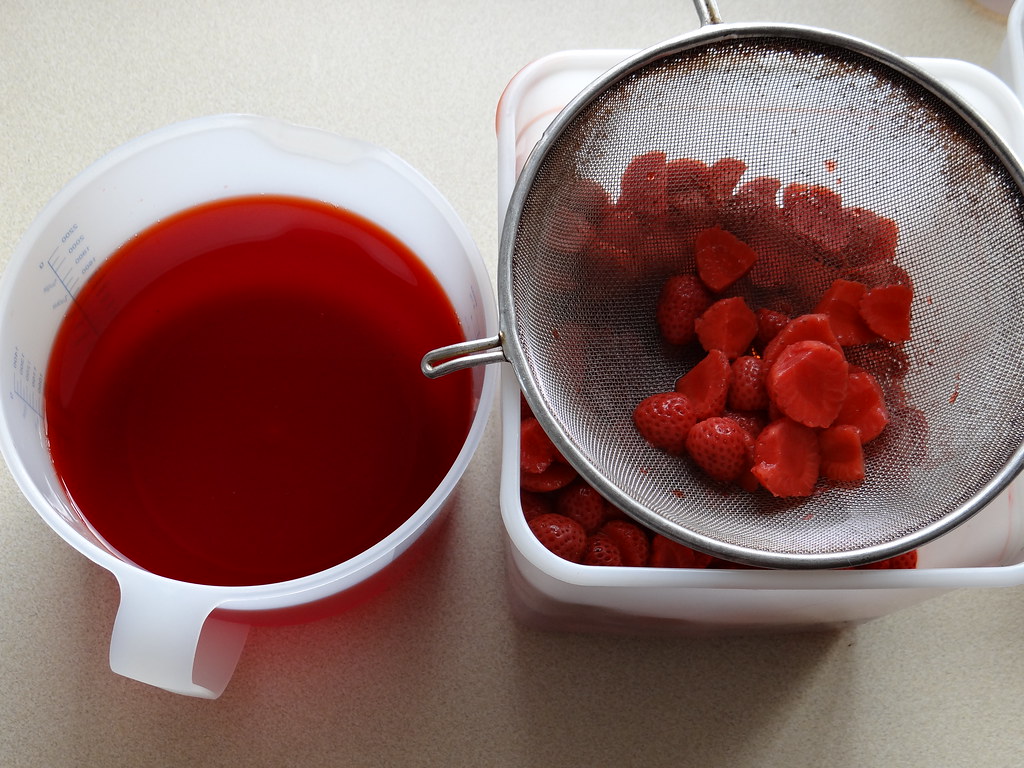
Strawberry Syrup
To each gallon demijohn we add the juice of half a fresh lemon and a small teaspoonful of a quality wine yeast.

Lemon juice and wine yeast

Sugar syrup - one with added strawberry syrup and yeast
There have been lots of strawberries this year and the liquor has a nice red colour. Elderflowers also seem to have been much in evidence and produce a more delicate wine.
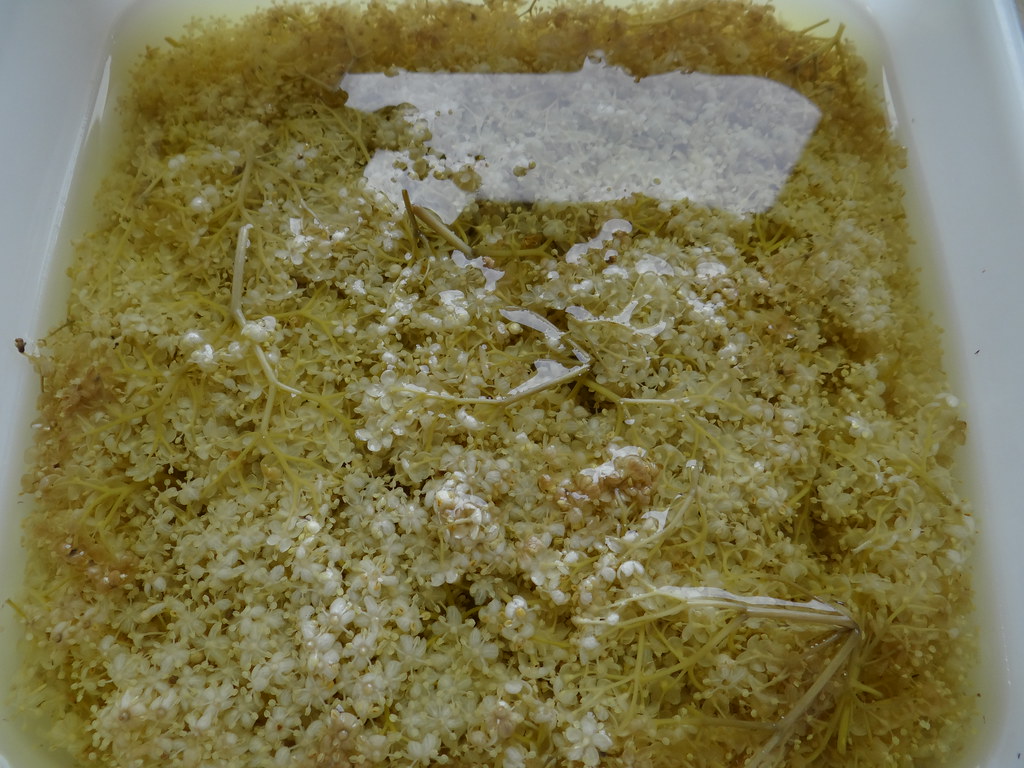
One gallon of elderflowers covered with boiling water
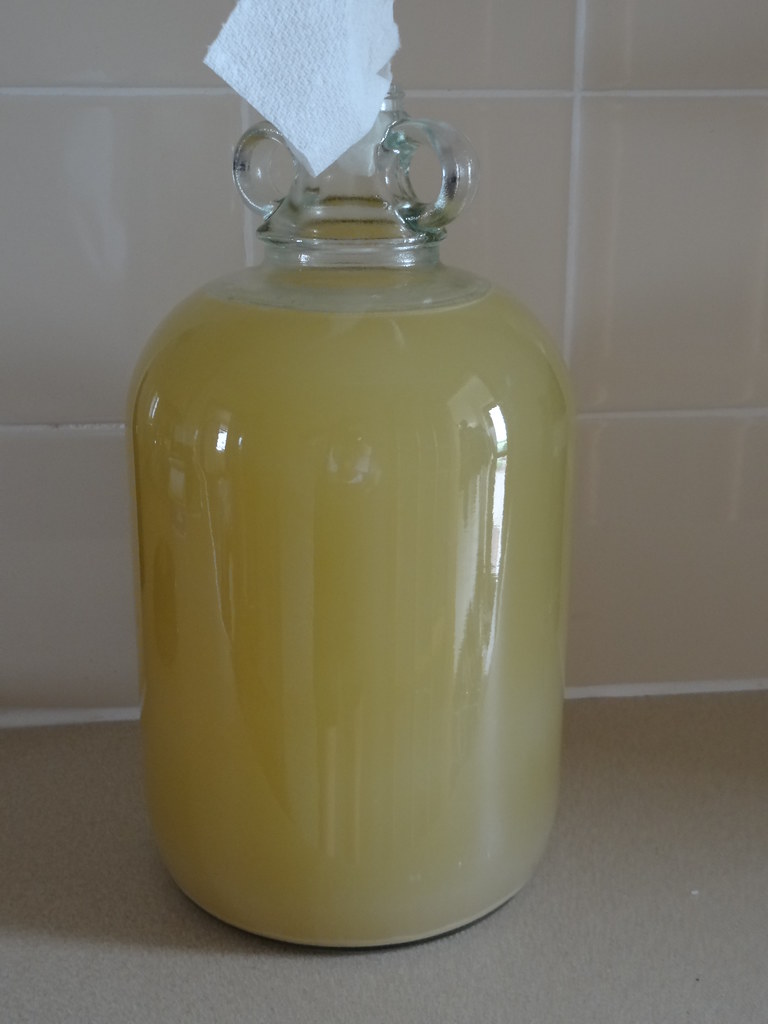
Fermenting – Elderflower and sugar syrup after about one week.
After about a fortnight the initial vigorous fermentation should have calmed down and the loose paper towel in the neck of the demijohn can be replaced with a more permanent airlock. Later, after about a month the fermentation should appear to have ceased and the demijohn can be stored in a cool place and the wine left to mature. The wine should be left in the demijohn for at least twelve months, with occasional checks on the airlock to ensure that it still has its water seal in place.
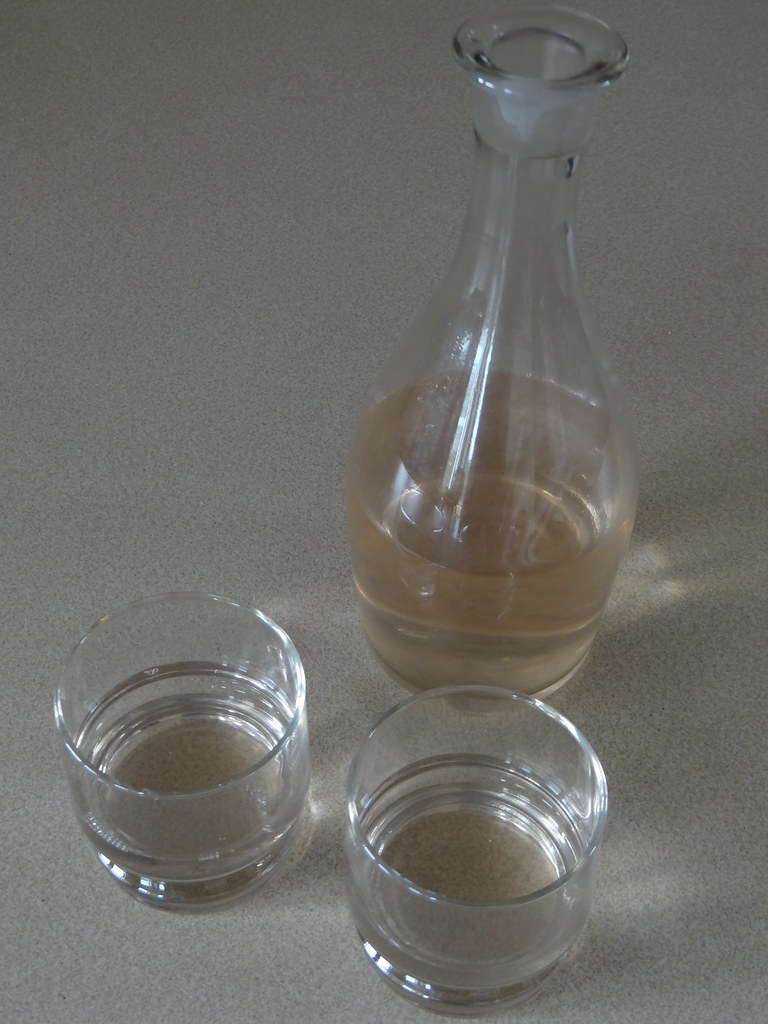
Testing – Rhubarb 2012
After twelve months the wine is ready for drinking – cheers!
-
 5
5


.thumb.jpg.60c53fcbcaa34017b05b8919d1a9e6d2.jpg)

7 Comments
Recommended Comments
Create an account or sign in to comment
You need to be a member in order to leave a comment
Create an account
Sign up for a new account in our community. It's easy!
Register a new accountSign in
Already have an account? Sign in here.
Sign In Now